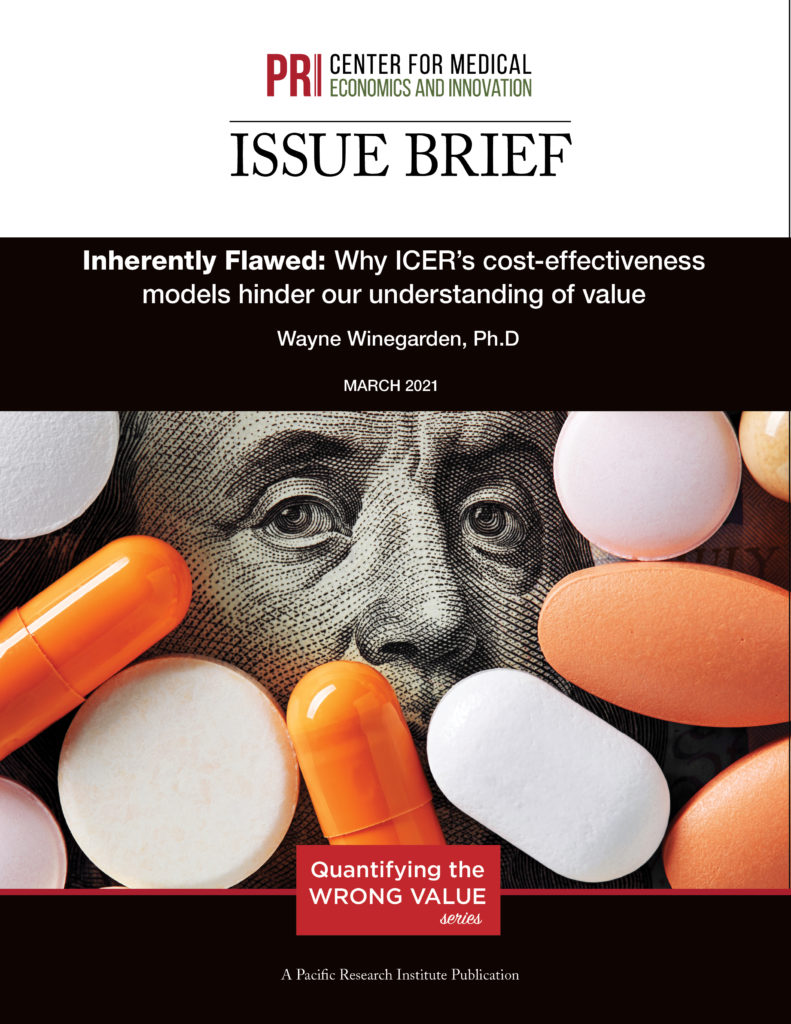ISSUE BRIEF: ICER Analyses Are Flawed, Undervalue Life-Saving Medicines, and Are Biased Toward Price Controls
 A commonly-used analysis to determine a medicine’s value is based on flawed methodologies that would diminish innovation and access, finds a new report released today by the nonpartisan Center for Medical Economics and Innovation at the Pacific Research Institute.
A commonly-used analysis to determine a medicine’s value is based on flawed methodologies that would diminish innovation and access, finds a new report released today by the nonpartisan Center for Medical Economics and Innovation at the Pacific Research Institute.
“Cost effectiveness reports may provide precise estimates, but there is no reason to believe that these estimates accurately reflect the value of medicines,” said Dr. Wayne Winegarden, the brief’s author. “The documented biases in their value assessments should raise serious concerns that ICER’s work is inaccurate and biased toward undervaluing medicines.”
Click to download “Inherently Flawed”
The Institute for Clinical and Economic Review (ICER) promotes itself as “the nation’s drug pricing watchdog.” However, as documented in the first paper in the three-part “Quantifying the Wrong Value” series, ICER’s cost-effectiveness reports contain inappropriate methodologies and subjective judgments and are not an objective determination of a medicine’s value. Winegarden notes the error-filled reports are a more complex calculation of biased, inaccurate assumptions.
ICER’s flaws include:
- Not conducting clinical trials or treating patients, making them incapable of determining whether a new medication provides good value
- Basing models on a population perspective to support population-level policy decisions, even though most health care decisions are based on individual patient needs and preferences
- Evaluating the cost-effectiveness of new treatments before data from clinical trials and real-world use is available
- Undervaluing non-health care benefits, such as living a pain-free life
- Formulating budget thresholds that effectively create price controls for what ICER subjectively believes should be spent on drugs
Another major flaw that Winegarden explores is ICER’s reliance upon the controversial cost per quality-adjusted life year (QALY) concept to determine a medication’s cost effectiveness. It uses a formula to come up with a dollar estimate, however these are neither objective nor accurate. Winegarden notes there is no connection between the ICER’s estimates and the value patients place on their health.
“The ICER’s cost-effectiveness models do not accurately measure a drug’s value, but really promote price controls that will disincentivize innovation,” says Dr. Wayne Winegarden, the brief’s author. “Less innovation means fewer efficacious treatments for patients. Price controls restrict access to currently available medications. The consequences are a lower quality of life, and for some patients, a higher risk of death.”
Winegarden notes that a value-based pricing system is being thwarted because of a broken drug pricing and health insurance system. A medication’s price will only reflect its value when current inefficiencies are eliminated and a healthy market is created that connects price to value.
Future papers in the “Quantifying the Wrong Value” series will outline an alternative methodology to establish prices for medicines that truly reflect their value.

